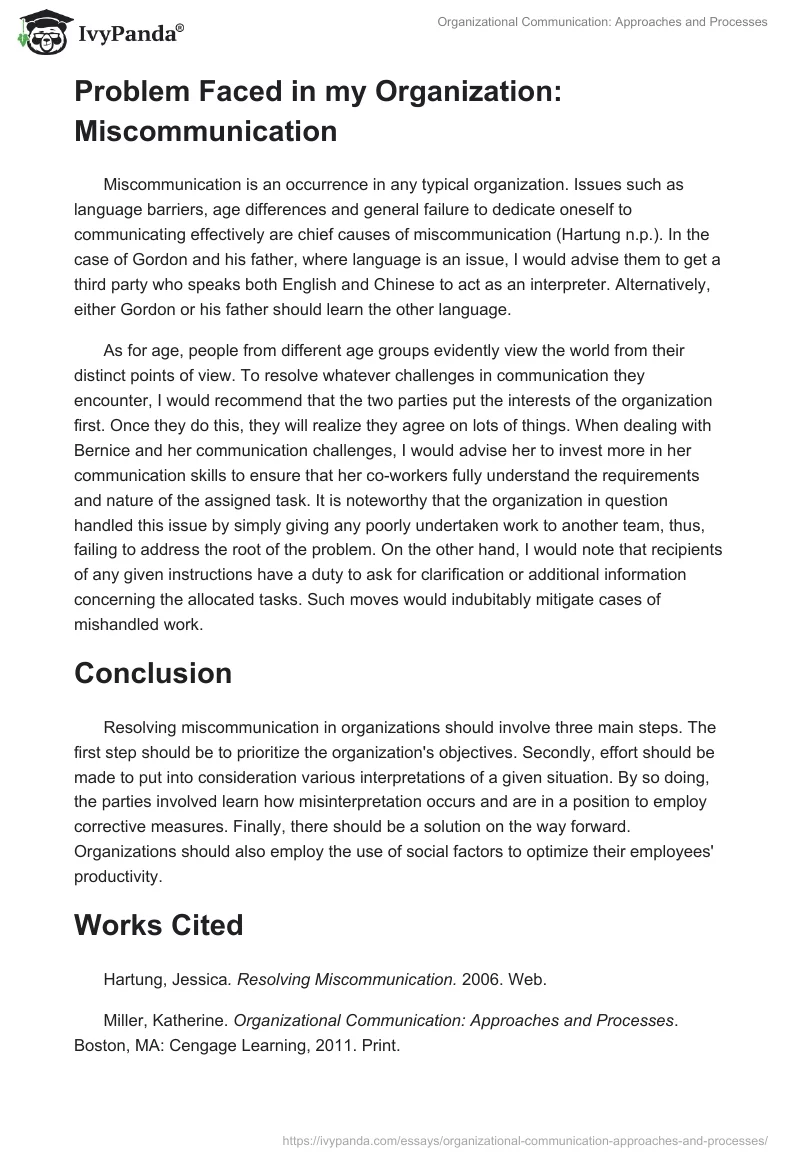Introduction
The modern competitive business world requires from companies efficient and precise means of communication. Intrinsically, the purpose of human force in a given organization is to achieve the set of objectives in the most effective manner. Efficient communication is at the heart of the process as vividness with which tasks are understood goes a long way in determining the quality of output by the involved members.
Relating Class Work and Field Work
In the study of Hawthorne, it is established that the amount of attention directed to employees affects performance in their allocated work. Shifting attention towards a hired hand has a positive impact on their output. Conversely, denying attention to a staff member led to mediocre results. This psychological phenomenon is known as the Hawthorne effect (Miller 56).
During the course we learnt about various types of interaction and cooperation within the organization. Nonetheless, it seems the staff and management of the organization in question knows little about it. It often seems people get tasks randomly and the company does not have any strategy or even precise plan. Employees are often left with little or no instruction and it seems managers do not care whether the task can actually be completed. Clearly, it is essential to change this approach in the organization and this will contribute greatly to its development as employees will know what they are doing and why they are doing it. It is necessary to note that this experience has enabled me to see real life issues companies meet. The organization in question was a perfect place to observe mistakes and their outcomes. I also worked out certain strategies to employ to improve communication within the organization.
Problem Faced in my Organization: Miscommunication
Miscommunication is an occurrence in any typical organization. Issues such as language barriers, age differences and general failure to dedicate oneself to communicating effectively are chief causes of miscommunication (Hartung n.p.). In the case of Gordon and his father, where language is an issue, I would advise them to get a third party who speaks both English and Chinese to act as an interpreter. Alternatively, either Gordon or his father should learn the other language.
As for age, people from different age groups evidently view the world from their distinct points of view. To resolve whatever challenges in communication they encounter, I would recommend that the two parties put the interests of the organization first. Once they do this, they will realize they agree on lots of things. When dealing with Bernice and her communication challenges, I would advise her to invest more in her communication skills to ensure that her co-workers fully understand the requirements and nature of the assigned task. It is noteworthy that the organization in question handled this issue by simply giving any poorly undertaken work to another team, thus, failing to address the root of the problem. On the other hand, I would note that recipients of any given instructions have a duty to ask for clarification or additional information concerning the allocated tasks. Such moves would indubitably mitigate cases of mishandled work.
Conclusion
Resolving miscommunication in organizations should involve three main steps. The first step should be to prioritize the organization’s objectives. Secondly, effort should be made to put into consideration various interpretations of a given situation. By so doing, the parties involved learn how misinterpretation occurs and are in a position to employ corrective measures. Finally, there should be a solution on the way forward. Organizations should also employ the use of social factors to optimize their employees’ productivity.
Works Cited
Hartung, Jessica. Resolving Miscommunication. 2006. Web.
Miller, Katherine. Organizational Communication: Approaches and Processes. Boston, MA: Cengage Learning, 2011. Print.


